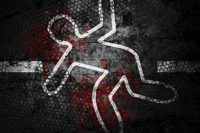Yes, this is a story about errors – plural -- made by one person, me. I’m not going to beat myself up here. James Reason, professor emeritus at the University of Manchester (UK), and one of the seminal authorities on human error, reminds us that most errors are caused by good, competent people who are trying to do the right thing.
Reason defines a human error as something that has been done that was not intended by the actor, not desired by a set of rules or an external observer, or that led the task or system outside its acceptable limits. My errors indeed were not intended or desired.
Before I dive into my story, it’s also important to remember Reason’s principles of error management:
● Human error is both universal & inevitable Human fallibility can be moderated but it can never be eliminated.
● Errors are not intrinsically bad: Success and failure spring from the same psychological roots. Without them we could neither learn nor acquire the skills that are essential to safe and efficient work.
● You cannot change the human condition, but you can change the conditions in which humans work: Situations vary enormously in their capacity for provoking unwanted actions. Identifying these error traps and recognizing their characteristics are essential preliminaries to effective error management.
● The best people can make the worst mistakes: No one is immune! The best people often occupy the most responsible positions so that their errors can have the greatest impact…
● People cannot easily avoid those actions they did not intend to commit: Blaming people for their errors is emotionally satisfying but remedially useless. We should not, however, confuse blame with accountability. Everyone ought to be accountable for his or her errors [and] acknowledge the errors and strive to be mindful to avoid recurrence.
● Errors are consequences not causes: …errors have a history. Discovering an error is the beginning of a search for causes, not the end. Only be understanding the circumstances… can we hope to limit the chances of their recurrence.
● Many errors fall into recurrent patterns: Targeting those recurrent error types is the most effective way of deploying limited Error Management resources.
● Safety significant errors can occur at all levels of the system: Making errors is not the monopoly of those who get their hands dirty. The higher up in an organization an individual is, the more dangerous are his or her errors. Error management techniques need to be applied across the whole system.
A series of human errors
My story begins with a pair of black dress shoes. The first error I made was deciding to take these shoes to the recent National Safety Congress & Expo in San Diego this past September.
Why was this a mistake? I had only worn these shoes once, at a formal event. I thought I should get more use out of them. But a trade show is not the time or place. The shoes were not broken in. My hotel was more than a mile from the San Diego Convention Center.
My second error: deciding to walk back and forth from my hotel to the show seven times in four days instead of taking the shuttle bus. This walking was good exercise; helped me get my 10,000 steps a day in; but using shoes almost brand new was not the way to do it. This error was compounded by the size of the show: more than 50 aisles of exhibits, several football fields long, that had to be traversed many times daily to vendor appointments. The error was further compounded by my exercising too strenuously on an elliptical machine at my gym several times in the days leading up to the show. I thought I was getting in “trade show shape.” Actually I was tiring my legs. I over-trained.
The third error occurred after the show. I decided to take a brief, too brief, vacation of two days heading inland from San Diego to Temecula, California, about an hour north. The Temecula Valley is best known perhaps as Southern California’s answer to Napa Valley. It is home to many local vineyards and wineries.
I went not for the wine but to hike. I had my choice of trails. I decided to go for one of the longer, more difficult trails, the Dripping Spring trail located in the heart of Agua Tibia Wilderness. I read where the trail has an elevation gain of almost 3,000 feet, is about 15 miles in and out, and features a scenic ridge line and mountain views on a well-maintained trail.
Sounds like a nice workout and a chance to get reacquainted with nature, right? Well, this third error on my part involved not paying attention to the rest of my trail research. I either didn’t read or disregarded the fact that Dripping Springs offers little or no shade coverage and is not recommended for the summer months (early September is still officially summer) when temperatures can hit triple digits. November to May are the best times to hike Dripping Springs.
The morning I hit the trail it was not to be a triple-digit day. But the sky was a cloudless blue canvas, the sun very bright as it rose, and the temperatures probably hit the low 90s.
Error number four: I hit the trail wearing running shoes, not hiking shoes. Bad for the arches and for traction. I had no sunscreen, no hat with a floppy brim. I wore long jeans and a black shirt, expecting cooler weather. Error number five: I didn’t check the day’s weather report.
Error number six: I decided to go for it, to go the distance, 15 miles, conveniently forgetting all the walking I did at the show for four days on new shoes, and the pre-show over-training I did at my gym. In other words, my legs were more tired than I realized. I stopped once on the way up and could have decided then and there to turn back; it had already been a nice hike. But no, I wanted to see the trail’s end. And I didn’t feel fatigued. I did have plenty of water.
OK, so I reached the trail’s end, nothing spectacular about it, and started to descend. I’m reminded of the mountaineering mantra that coming down can be more difficult than going up. Your adrenalin wanes and fatigue starts to set in. Going up you have traction -- like climbing steps; going down you have to put the brakes on. Keeping your balance can be a challenge. A few times I did slide on my backside.
I had also read that you find few hikers on the Dripping Springs trail. Not everyone is up for a so-called difficult climb that will take about 7.5 hours to complete. No problem. A little solitude in nature is nice.
Entering the risk zone
Little did I realize I could have used some help coming down the trail. I did have my cell phone, and could get reception. That was my back up. Halfway down the trail my feet and legs began to cramp up. The legs definitely were stiffening. My face and the back of my neck were getting a good red sunburn. Fatigue was setting in. The adrenalin was gone. Being the safety editor, my mind turned to heat stress.
Where’s the damn shade? Well, dummy, you were told the trail offers little shade. I stopped for water. Started and soon felt dizzy, and was breathing hard. I had to sit down again. And I was going to stay down until my core body temperature cooled off.
I was worried about two types of heat illness. One comes from physical exertion – metabolic heat generated by muscle activity. The other comes from the environment – in this case a desert-like climate on a hot day. A few heat exhaustion symptoms appeared: yes, I was irritable, thirsty, cramping up, light-headed and tired. I didn’t want further, more serious symptoms: confusion, disorientation, slurred speech and unconsciousness. So I found a little slice of shade on the trail and sat it out for about 15 minutes.
I made it back to the trailhead moving slowly, carefully, trying to stay in touch with my body, how it was feeling, and thinking of the aloe I’d put on the sunburn and the giant water bottles I’d buy on the way home.
By the time I returned to my little rental cottage I could barely get out of the pickup I rented. The legs and joints were stiff as boards. The only recourse I had was to stretch out in the comfy bed for a few hours, not moving.
Lying there, I reminded myself: Human error, mental mistakes, are universal and inevitable. Good people can and do make bad mistakes. Don’t blame the victim. People can’t easily avoid mistakes they didn’t intend to make. And my near-miss encounter with heat exhaustion or worse could be traced back to a series of errors I made “upstream” as they say, removed from where the near-incident occurred.
So that’s my personal story of experiencing human error, a series of errors. I imagine you have one too. We’re talking about something universal, remember.




